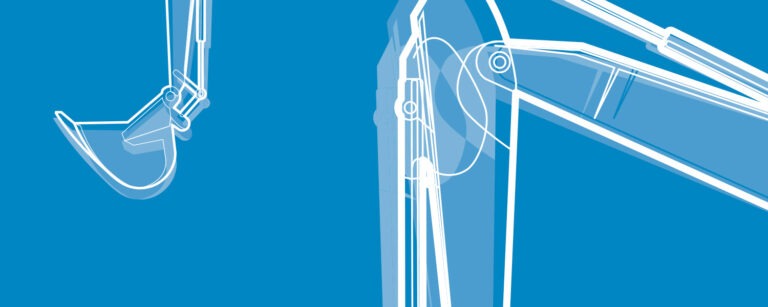
Who’s digging at this time of night...?
19. February 2024

30. November 2022
Like the Pink Panther series – Blake Edwards’ comedy thrillers – the racing car built by university students in Delft in the Netherlands is a gem. In fact, it’s the world’s first Le Mans-style fuel cell-powered racing car with a monocoque homologated by Fédération Internationale de l’Automobile (FIA).

To date, students at the Technical University of Delft have built no fewer than eight generations of these electrically powered vehicles. In doing so, they soon realized the importance of the fuel cell drive as a means of addressing climate change. Now more than ever, they think the time is right to introduce the public at large to the cold “combustion” of hydrogen and air for producing electric power. As Team Manager Mark Jan Uijl explains: “By developing and fabricating fuel cell-powered racing cars, we’ve been able to publicize the terrific potential of this technology – especially when the cars are out on the track.”
The Delft-based team can already look back at a pretty impressive history. The path to success wasn’t an easy one: quite the contrary. The students displayed discipline, drive, and commitment during the multiyear development phase. Things really got going in 2008, when the young hydrogen enthusiasts took part in the Formula Zero championships, the first-ever races with fuel cell-powered vehicles – even if it was just a go-kart. This is the origin of the name “Forze”, which the founders picked in 2007.


For the students from Delft, the latest generation of hydrogen-powered race car poses multiple challenges during the development phase of the FORZE IX. For instance, the complete high-voltage architecture has to be changed, as does the entire concept of the race car. Everything from new motors to the FORZE IX’s safety system: 0–100 km/h in three seconds, top speed 300 km/h and 240 kW output.

Today, Forze Hydrogen Electric Racing has successfully moved on to racing cars, with monocoques authorized in the FIA’s LMP3 class. At the Zandvoort track, for example, the Forze VI held the lap record for electric vehicles for a year and a half in the Supercar Challenge. In the meantime, Forze has been taking on conventionally powered racing cars, too. In recent years, for instance, the team took several spots on the winner’s rostrum in the Dutch Supercar Challenge during the Gamma Racing Days at Assen in the Netherlands. Driven by Formula 1 pilot and Le Mans champion Jan Lammers, the car even attained the lap record for fuel cell cars at the famous Nürburgring Nordschleife.
Successes like these naturally require considerable racing ability. In the meantime, the team is supported by professional racing car drivers, who in some cases discovered their love of racing when they joined the team as students.

Given the numerous internal combustion competitors, moreover, getting the parameters for racing right is important, too. For example, the current racing car, powered by the six kilograms of hydrogen necessary for sixty minutes on the track, could be refueled during a pitstop in just three minutes. More than 50 students, 25 of them full-time, are now taking part in the Forze project.
A new racing car – the Forze IX – is currently being developed whose fuel cells will feature twice the output of its predecessor. This will put it in the GT3 segment, alongside such race-hardened rivals as the Porsche 911 GT3 or the Lamborghini Huracán GT3. Jasper van Dongen, the project’s Chief Engineer and thus responsible for the racing car’s technical aspects, reveals that the ambitious group has a new objective in its sights: “We are in the middle of the development of Forze IX and we can already spot a lot of areas where we expect technology to progress rapidly in the coming years, allowing Forze to step up their game even further than the GT3 class. This advancement could, for example, enable the team to compete in the 24h of Le Mans in future years.”

The young racing team is receiving support from a number of sponsors. In some cases, it’s simply a matter of making urgently required components available, as Pierburg did with its electric pumps. “We have a long-standing partnership with Pierburg that began with electric oil pumps and now includes electric coolant pumps, which we are installing in the current Forze,” explains van Dongen. “In the meantime”, he notes, “Pierburg pumps in our racing cars supply coolant and lubricant to everything from the coolant circuit of the fuel cell to the electric motors, the power electronics, the battery, and the transmission.”
The most recent support provided to these budding engineers: a 950-watt pump, which Pierburg presented to the team. Commenting on the manufacturer’s support for the student group, Thomas Wienecke, Director of Product Development Electric Pumps at Pierburg, says that, “Thanks to their professional attitude, the Forze team is making serious headway, which I’m really glad to see. On top of this, these young developers are extremely enthusiastic about what they’re doing. And that’s infectious.”

It’s entirely possible that collaboration between Pierburg and the ambitious young team in Delft will continue to flourish. Just recently, the developers of the pink racing car expressed fresh interest in other fuel cell components from Pierburg. These include a high-voltage pump, a recirculation blower for hydrogen, and a cathode valve. Could it be that all or some of these things will soon be debuting on the racetrack too?
(Article originally published on 5 April 2021)
Click here to receive push notifications. By giving your consent, you will receive constantly information about new articles on the Dimensions website. This notification service can be canceled at any time in the browser settings or settings of your mobile device. Your consent also expressly extends to the transfer of data to third countries. Further information can be found in our data protection information under section 5.